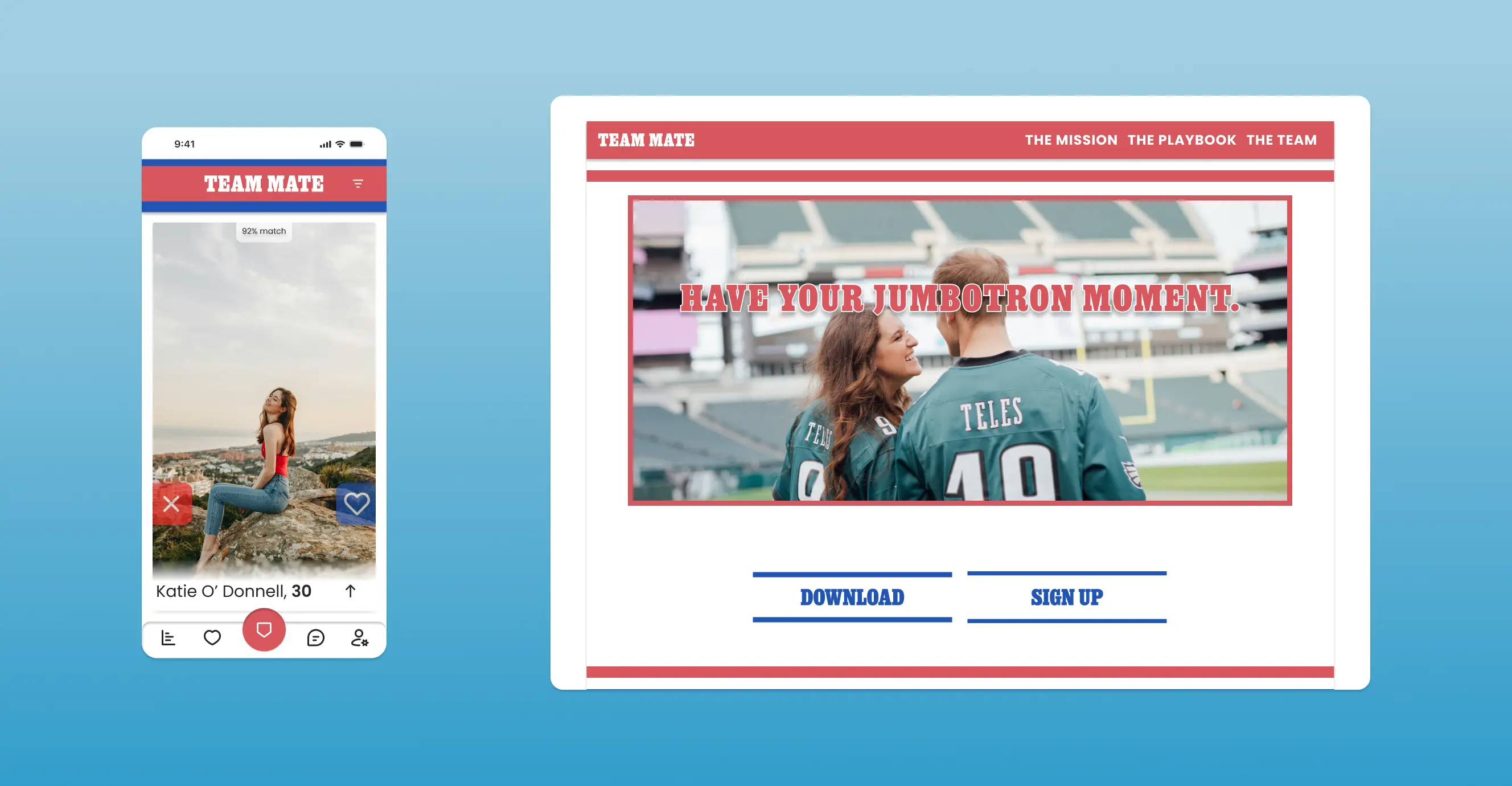My Role
Lead UX Designer & Researcher
Collaborators
Vincent Peasante
Sara Semmoune
Subin Hwang
Charity Dupont
Sabrina Rodriguez
Tools
Figma
Adobe Creative Cloud
1. Overview
Background & Project Scope
This project was developed through Columbia Engineering's UX/UI Program, where our team identified and addressed a significant gap in the dating app market. Working under real-world constraints and deadlines, we followed a comprehensive product development cycle from research to high-fidelity prototyping.
Timeline:
3-week design sprint
Team Structure:
- Led a cross-functional team of 5 designers
- Managed research, design, and testing phases
- Coordinated with stakeholders and mentors
Key Deliverables:
- Comprehensive user research
- Complete design system
- High-fidelity interactive prototype
- User testing documentation
The Problem
Sports enthusiasts often struggle to find romantic partners who share their passion for sports, leading to potential relationship conflicts and misunderstandings. Traditional dating apps don't adequately address this specific need, making it challenging for sports fans to find meaningful connections based on shared interests.
Our Solution
We created TeamMate, a dating app that matches users based on their sports interests, favorite teams, and game-watching habits. The app provides a platform where sports enthusiasts can connect with potential partners who share their passion, making it easier to build meaningful relationships founded on common interests.
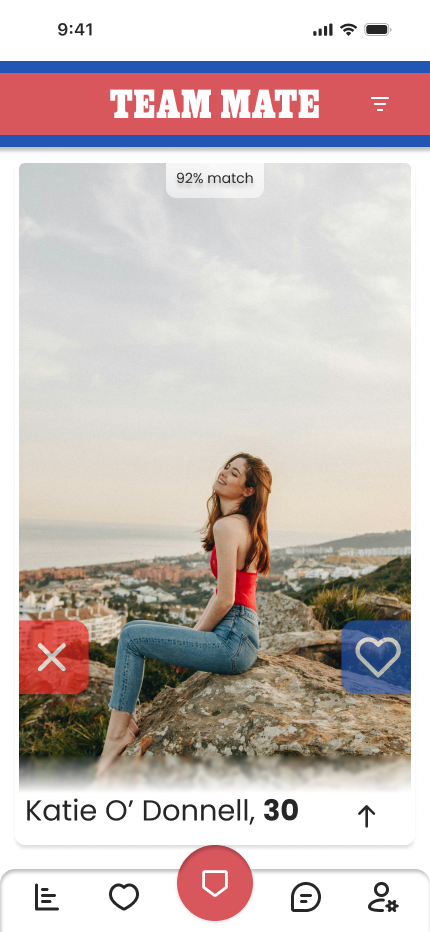
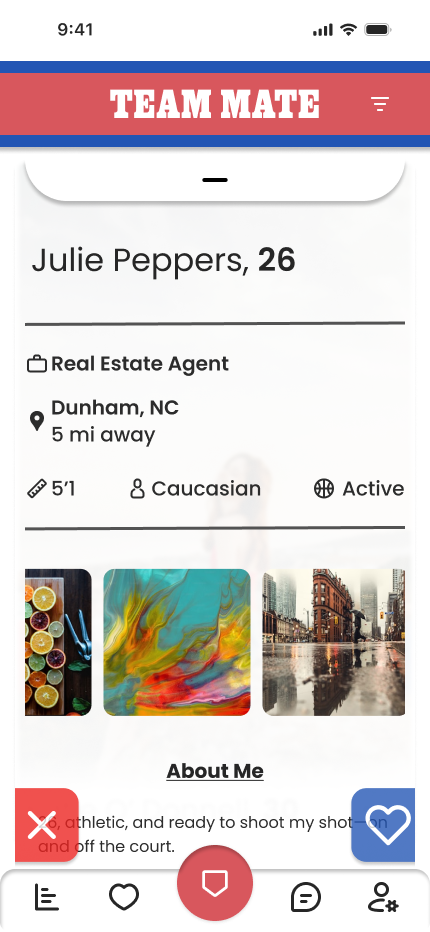
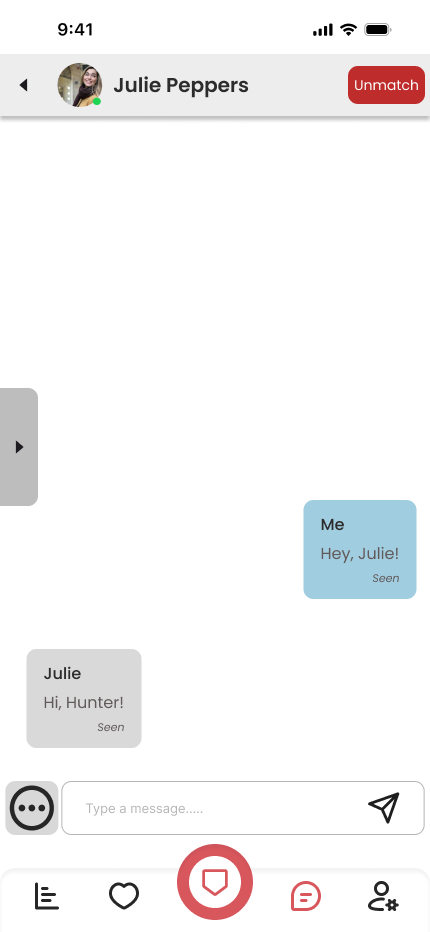
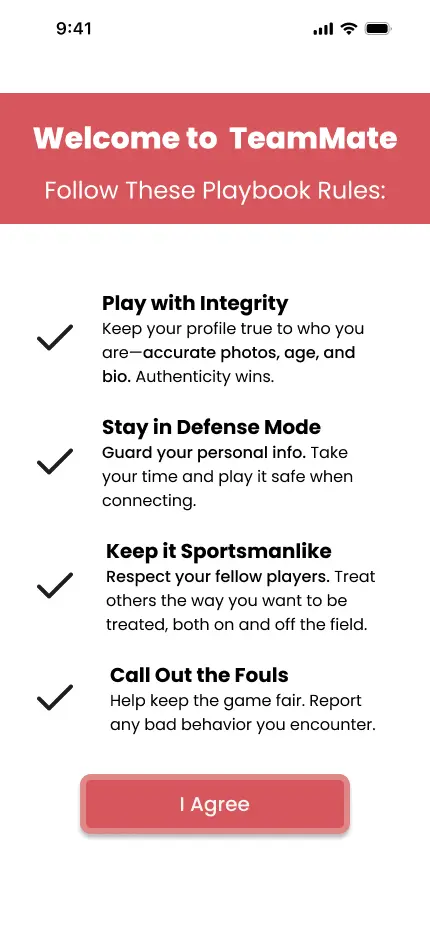
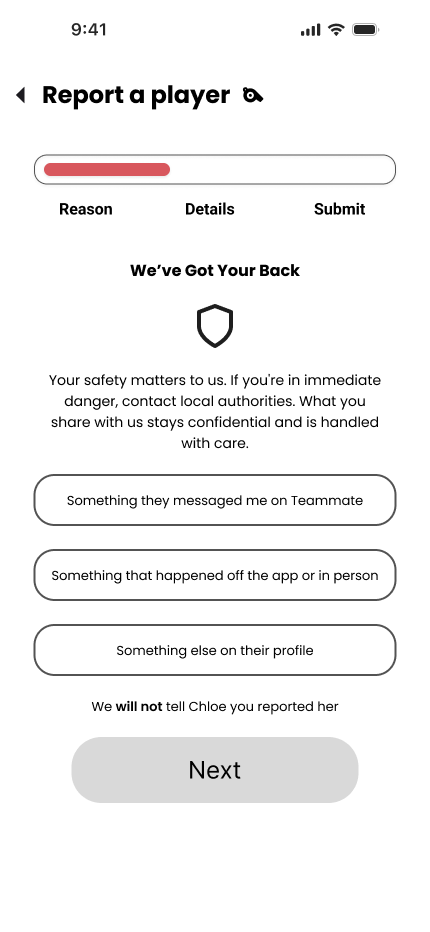
2. Research
Research Plan
We developed a comprehensive research plan to understand both the dating app landscape and the specific needs of sports enthusiasts in relationships.
Research Objectives:
- Assess the market need for a sports-focused dating platform
- Understand how sports fandom affects dating preferences and relationship dynamics
- Identify key user behaviors and motivations on existing dating apps
- Evaluate the impact of shared interests in successful relationships
Competitive Analysis
We analyzed leading dating apps to understand their strengths, unique value propositions, and potential gaps in serving sports enthusiasts. This analysis focused on both direct competitors in the dating space and how they approach interest-based matching.
| Company | Target Audience | Key Features | Strengths | Weaknesses |
|---|---|---|---|---|
| Bumble |
|
|
|
|
| Tinder |
|
|
|
|
| Hinge |
|
|
|
|
Key Market Insights
- Market Gap: Despite the maturity of the dating app market, there remains a significant opportunity in interest-based matching, particularly for sports enthusiasts who prioritize shared game schedules and team affiliations.
- Competitive Landscape: While existing apps offer basic interest tagging, none provide deep integration of sports preferences or lifestyle matching. This creates an opportunity to combine efficient matching mechanics with specialized sports-focused features.
- Differentiation Strategy: TeamMate can establish its niche by focusing on three key areas:
- Sports-specific matching algorithms
- Game schedule compatibility
- Sports venue date planning
This analysis revealed that while the dating app market is crowded, there's a clear opportunity to create a focused platform that deeply integrates sports interests into the matching process, rather than treating them as surface-level preferences.
User Interviews & Research Insights
We conducted 5 in-depth interviews with sports enthusiasts to understand their experiences with dating apps and relationships. Our research revealed several key insights:
Dating App Preferences:
- Users prioritize physical attraction and personality in dating apps
- Many expressed frustration with the lack of depth in traditional dating apps
- Safety and authenticity were major concerns
Sports and Relationships:
- Shared interest in sports often strengthens relationship bonds
- Differing levels of sports enthusiasm can create scheduling conflicts
- Users want partners who understand their commitment to sports
User Persona
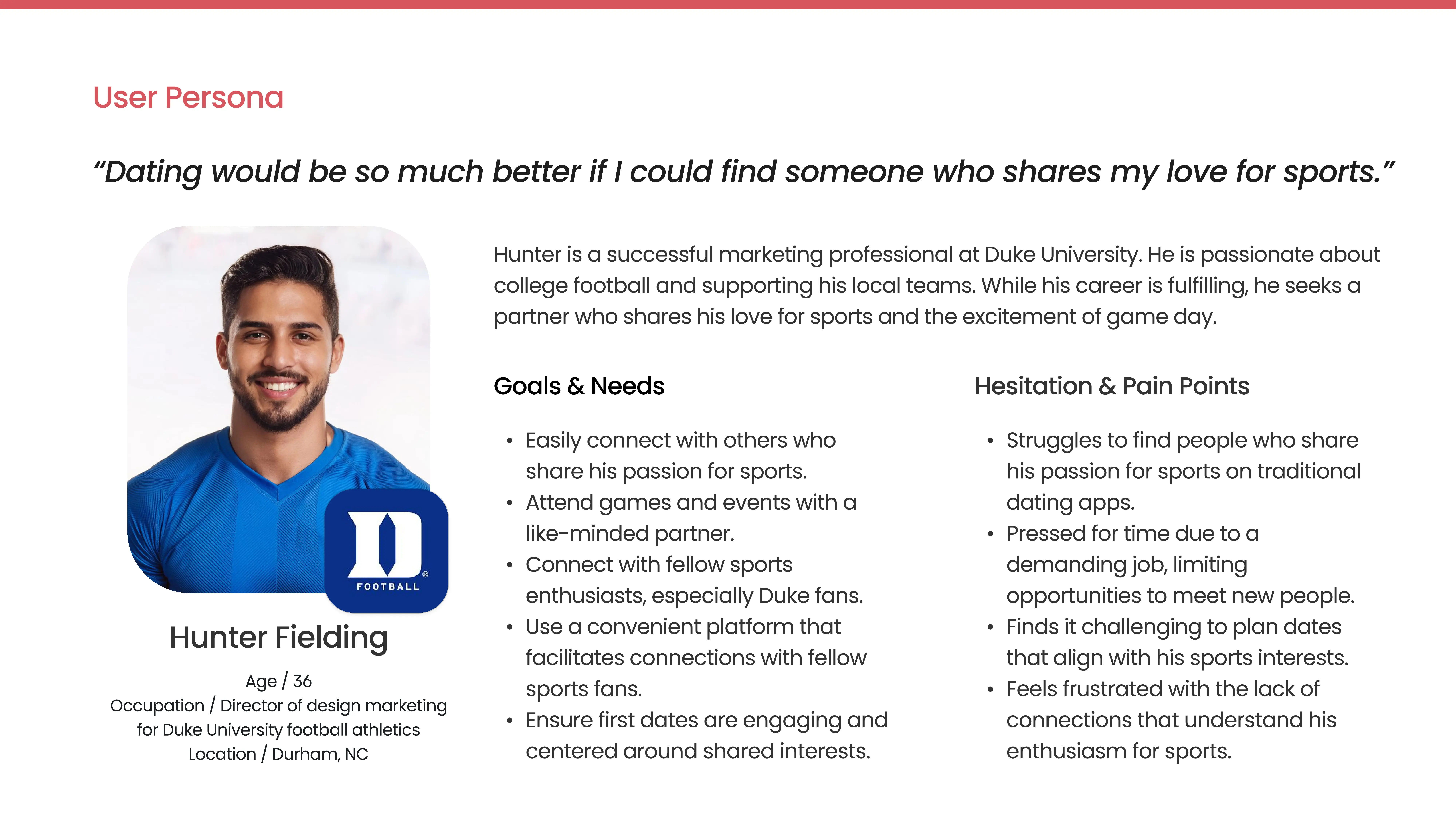
3. Ideation
Brainstorming
Based on our user research, we identified several key features that would address user needs:
- Integrated game ticket purchasing for planning dates
- Intuitive swiping interface familiar to dating app users
- Sport-specific dating pools for better matches
- Streamlined onboarding focused on sports preferences
- Team-based matching algorithm
- Game watching schedule compatibility
Feature Prioritization
We prioritized features based on user value and technical feasibility:
- Integrated game ticket purchasing for planning dates
- Intuitive swiping interface familiar to dating app users
- Sport-specific dating pools for better matches
- Streamlined onboarding focused on sports preferences
- Team-based matching algorithm
- Game watching schedule compatibility
User Flow
We designed a comprehensive user flow that emphasized a smooth onboarding experience and intuitive navigation through the app's core features.
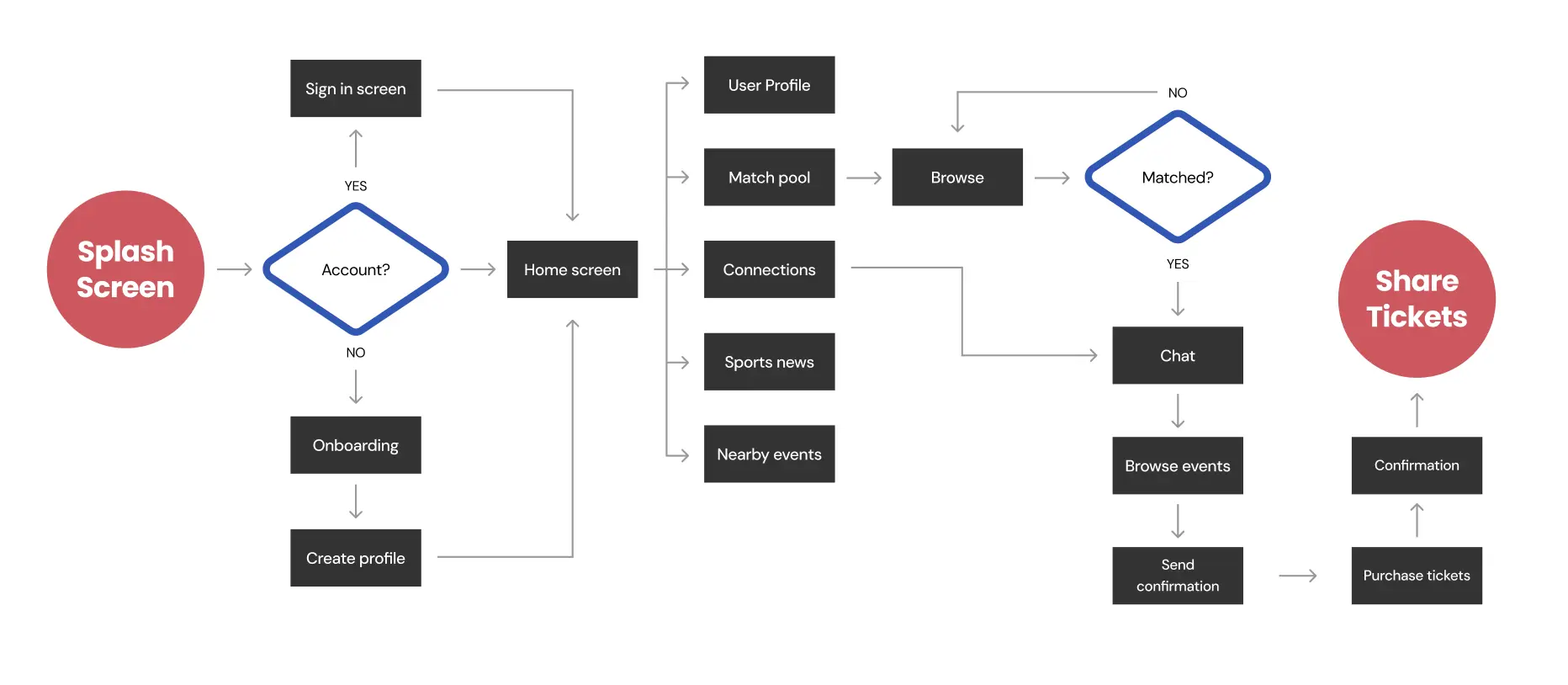
4. Prototyping
Low Fidelity Mockup
We began with low-fidelity wireframes to establish the core functionality and test the main user flows. This allowed us to quickly iterate on the app's structure before investing in detailed designs.
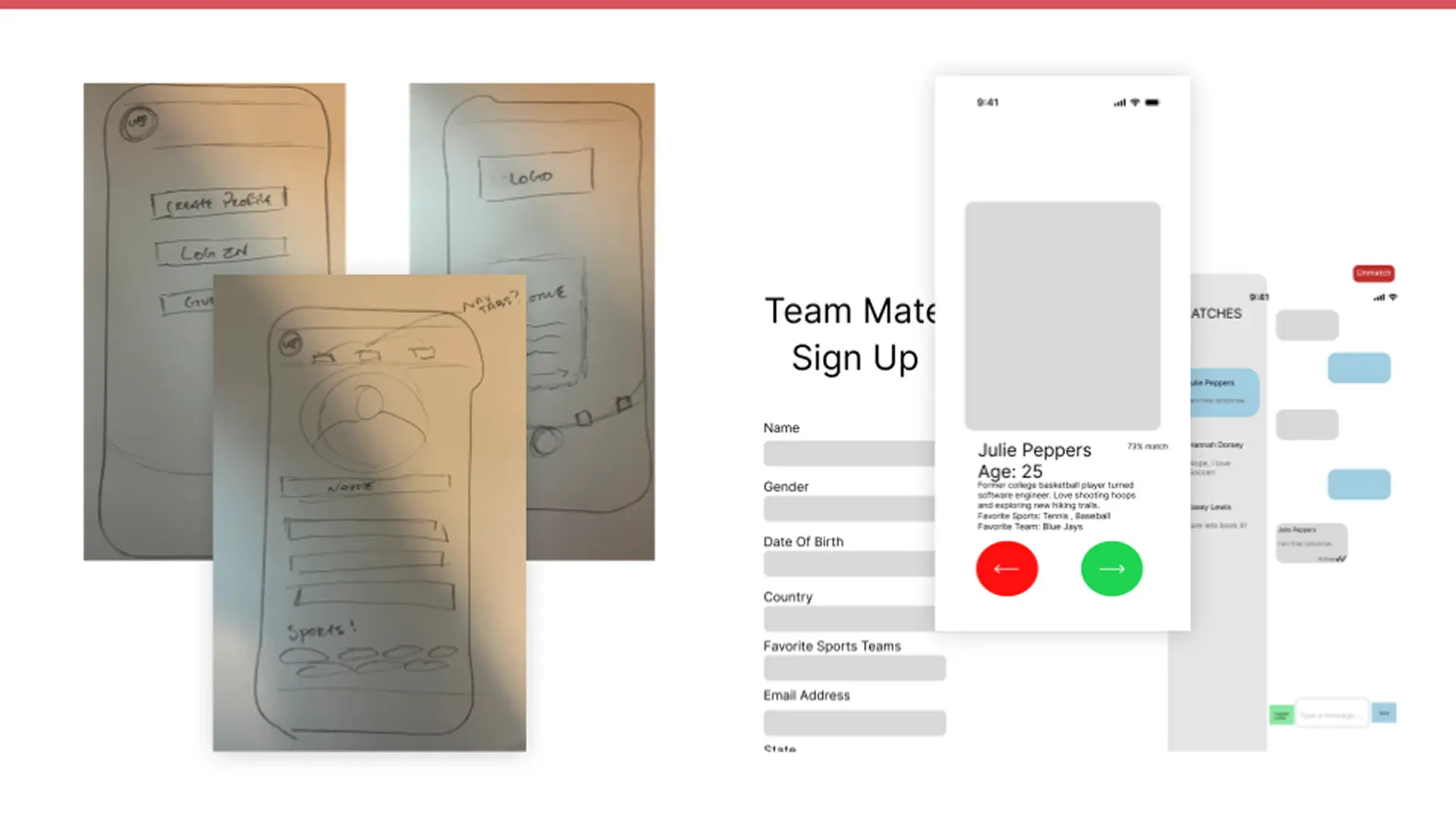
Style Guide
We created a style guide to ensure consistency across the app. This included color palettes, typography, and design elements.
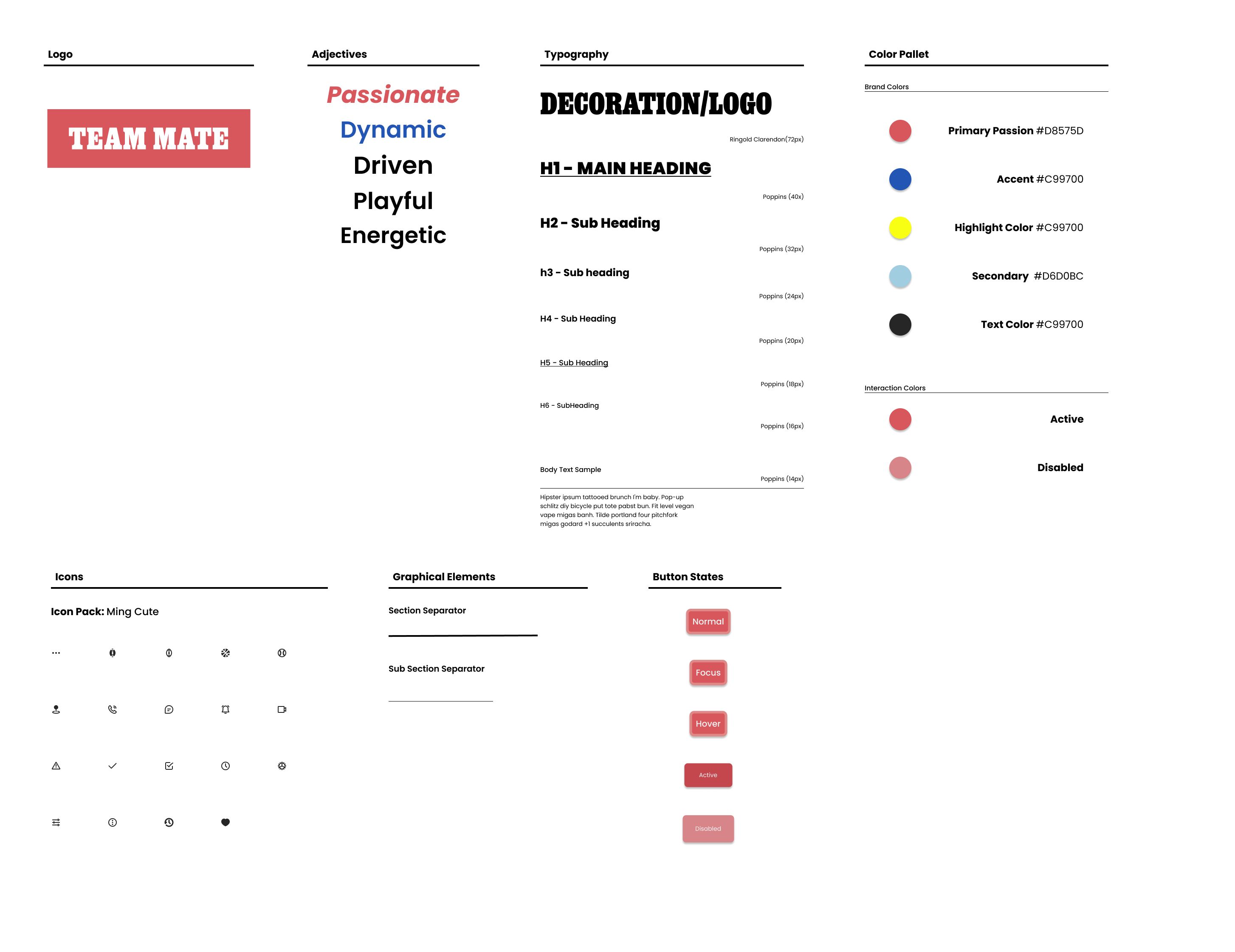
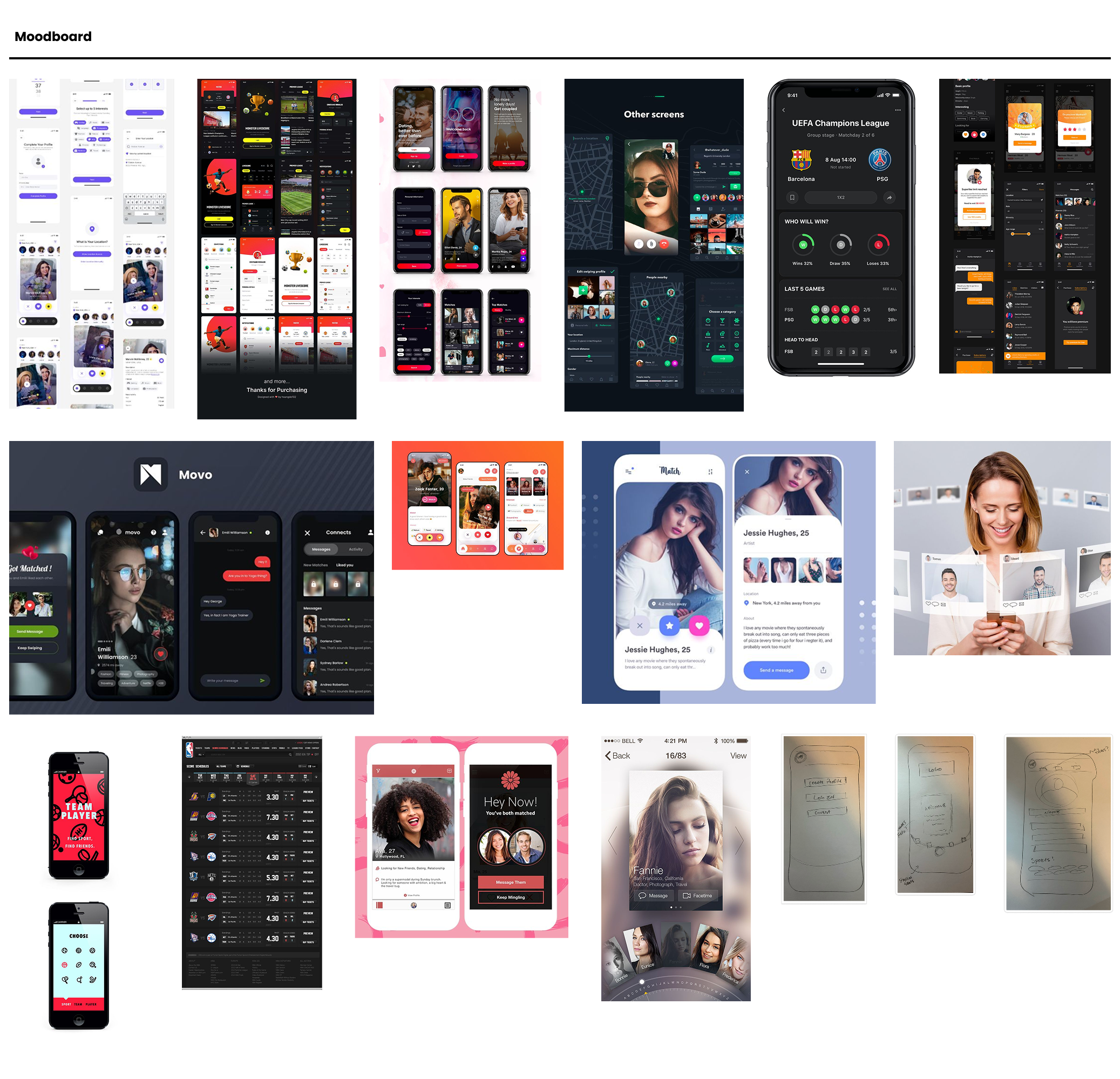
Technical Challenges
While developing the high-fidelity prototype, we encountered several technical challenges, particularly with implementing the core swiping functionality:
Swiping Mechanism Challenges:
- Implementing natural-feeling swipe physics that matched user expectations from apps like Tinder
- Handling edge cases such as incomplete swipes and determining swipe thresholds
- Ensuring smooth animations while maintaining performance
- Creating responsive behavior across different screen sizes
Solutions Implemented:
- Utilized Figma's Smart Animate feature to create fluid transitions between states
These technical challenges led to valuable insights about interaction design and the importance of balancing user expectations with technical feasibility. The solutions we developed not only improved the prototype's functionality but also enhanced the overall user experience.
5. Testing
Testing Plan
We conducted usability testing with 5 participants to evaluate the app's core functionality and user experience.
Test Objectives:
- Evaluate the clarity and efficiency of the onboarding process
- Assess the usability of the matching and messaging features
- Test the game ticket purchasing workflow
- Gather feedback on the overall user experience
Testing Insights
Key Usability Challenges:
- Heart and X button colors needed better contrast
- Button functions required clearer visual indicators
- Photo upload requirement created friction
- Checkbox design needed refinement
- "I agree" screen required visual enhancement
- Profile customization options were limited
Positive Feedback:
- Users appreciated the sports-focused matching
- Game ticket integration was well-received
- Profile setup process felt intuitive
Mid Fidelity Iteration
Based on our testing insights, we refined the interface design and improved visual hierarchy throughout the app. Additionally, we began to apply the style guide to the mockup.
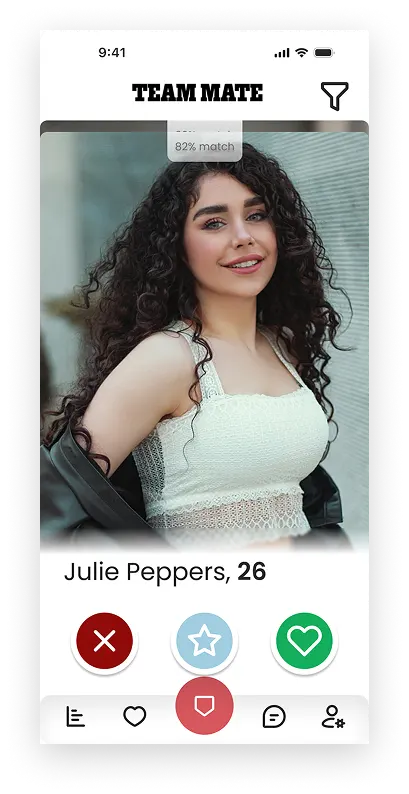
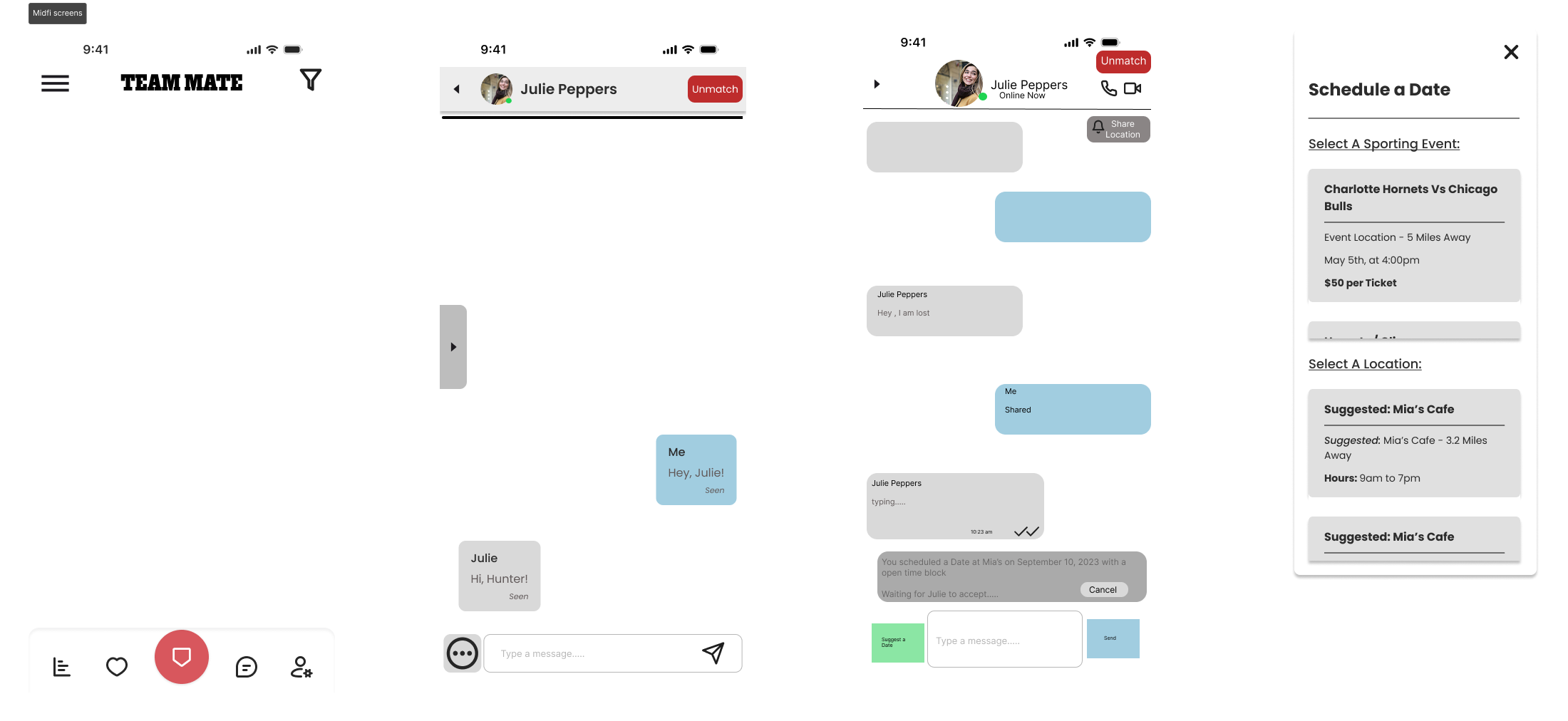
6. Conclusion
High Fidelity Mockup
Key Takeaways
Project Insights
- [Insight about sports-focused dating market opportunity and user needs]
- [Insight about the importance of specialized features vs. general dating app features]
- [Insight about user behavior patterns or preferences discovered]
Key Learnings
- Prioritizing core functionality and familiar dating app conventions while integrating sports-specific features created an intuitive yet specialized experience
- Complex prototyping challenges with Figma's advanced features enhanced our technical capabilities and design process
- Earlier implementation of quantitative research and comprehensive documentation would have strengthened our design decisions
Future Development
- Community Features: Expanding beyond dating to facilitate fan communities and local event discovery
- Enhanced Experience: Implementing team-based UI themes and integrated live-streaming for shared game viewing
